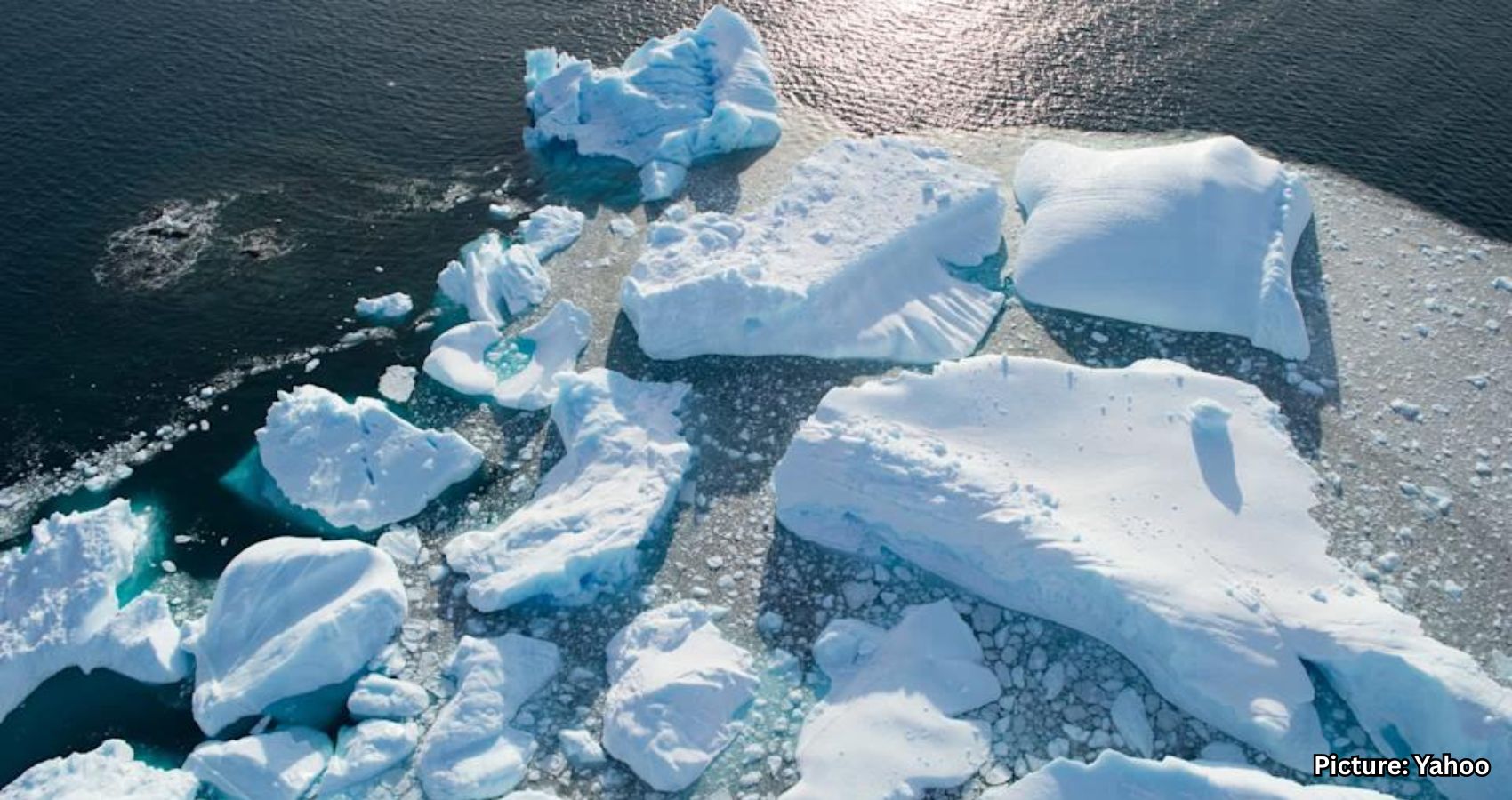In a rare and unexpected shift, scientists have recently documented a significant increase in the Antarctic Ice Sheet (AIS), suggesting a temporary reversal in the continent’s long-term ice loss trend. While this development brings a glimmer of optimism, researchers are urging the public not to mistake it for a long-term climate recovery. Instead, they caution that this uptick in ice mass is likely a short-lived result of unusual weather patterns and does not negate the larger threats posed by global climate change.
According to a newly published study in Science China Earth Sciences, the AIS gained mass at an unprecedented rate between 2021 and 2023. As reported by KTVU, this represents a dramatic shift from the preceding decade, during which the Antarctic was steadily losing ice. “The study found that between 2011 and 2020, the AIS was losing ice at a rate of 142 gigatons per year,” KTVU reported. “But between 2021 and 2023, the trend reversed, with the ice sheet gaining approximately 108 gigatons per year — a historic turnaround.”
The regions that experienced the most noticeable recovery were primarily located in East Antarctica. Areas such as Wilkes Land and Queen Mary Land, including important glacier basins like Totten, Denman, Moscow University, and Vincennes Bay, showed signs of partial recovery. These zones had previously been major contributors to ice loss, with the Denman Glacier, in particular, being a focal point of concern due to its deep grounding line and vulnerability to melting.
This unexpected mass gain provided a short-term benefit in global sea-level trends. KTVU noted that the added ice “helped temporarily offset rising global sea levels by 0.3 millimeters per year during that two-year span.” While this might seem like a small amount, any delay in sea-level rise offers valuable time for adaptation strategies in vulnerable coastal regions.
However, experts emphasize that this development should not lead to complacency regarding the climate emergency. The AIS, which stores 90% of the planet’s freshwater, has the potential to dramatically reshape coastlines if it were to melt significantly. The Antarctic and Southern Ocean Coalition has previously warned that a substantial melt would result in massive rises in sea levels, displacing populations, damaging infrastructure, and triggering broad ecological disruptions.
Despite the promising news, scientists point out that the ice gains are likely the result of increased snowfall driven by unusual weather patterns rather than a cooling trend. As KTVU explained, “scientists stressed that the climate crisis is far from over and that the gains could likely be attributed to unusual precipitation patterns, something that is also a sign of rising temperatures.”
This paradox — that increased snowfall can be a byproduct of warming — is a key concept in understanding the complex dynamics of climate systems. The Environmental Protection Agency (EPA) has explained this phenomenon: as global ocean temperatures rise, more water evaporates into the atmosphere. This excess moisture eventually returns to the surface in the form of heavier rainfall or snowfall when it collides with storm systems. So, while snow accumulation in Antarctica might suggest colder conditions at first glance, it can actually be a symptom of a warming world.
Another concern raised by climate researchers involves the role of subglacial water, an often overlooked factor in ice dynamics. In May 2025, scientists warned that current models might be underestimating the contribution of meltwater beneath the ice sheet. This subglacial water forms either from the pressure of the overlying ice or from geothermal heat emanating from the Earth’s bedrock. When this water accumulates, it can act as a lubricant, allowing glaciers to move more quickly toward the ocean.
The implications of this overlooked element are troubling. Researchers have projected that the presence of subglacial meltwater could significantly boost the AIS’s contribution to sea-level rise over the coming centuries. “They predicted the effects of subglacial water could contribute 2.2 meters (about 7.2 feet) to sea-level rise by 2300,” KTVU stated. Such a dramatic increase would have catastrophic consequences for millions of people living in low-lying coastal regions around the world.
Therefore, while the AIS’s temporary recovery is certainly worth noting, it should not be misinterpreted as evidence that global warming is reversing. In fact, the very mechanisms that caused the ice sheet to gain mass could themselves be driven by a climate system that is growing more unstable.
The broader scientific consensus remains unchanged: human-driven climate change continues to pose severe risks to the planet’s ecosystems and societies. The AIS’s recent gains should be seen as a complex and nuanced event — a product of transient climate variability, not a permanent shift in direction.
In conclusion, the observed growth of the Antarctic Ice Sheet between 2021 and 2023 is both a surprising and noteworthy phenomenon. It demonstrates that short-term climate events can temporarily alter long-term trends, offering brief respite from some of the dire projections surrounding sea-level rise. However, this recovery is not a sign that the climate crisis is easing. Rather, it highlights the unpredictable nature of a warming world and the importance of continued vigilance, research, and action to mitigate the worst impacts of climate change. As one key finding in the study illustrates, even a temporary gain in Antarctic ice does not erase the long-term losses or the growing influence of warming-related feedback loops.

